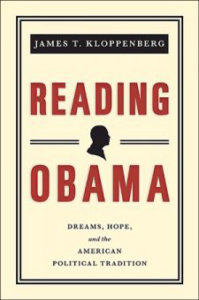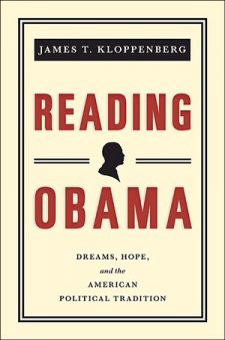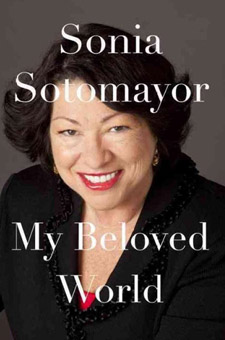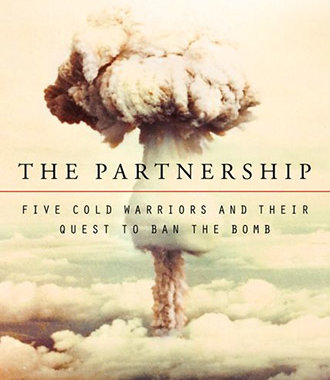
It has been said that President Barack Obama is like a Rorschach test—people project onto him their interpretations and feelings and beliefs. From the perspective of the left, he is a cool pragmatist. From the right, he is a socialist. When debates about health care reform heated up during the summer of 2009, the left tagged him as a spineless compromiser because he did not support the public option (universal health care), as they had hoped he would. The right tagged him as a tyrant for what they perceived as a big-government take-over of their health care. Some activists held signs that displayed Nazi swastikas and SS symbols. Finally, in March 2010 both houses of Congress passed the Affordable Care Act. President Obama was roundly criticized for having waited patiently for Congress to get its act together.
Birthers—those who believe President Obama was not born in the United States and is, therefore, not a legitimate president—continue to question the facts of his birth certificate. He was born in Hawaii in 1961. Recently, in a radio show interview, a prominent politician misspoke about President Obama’s childhood, stating that he grew up in Kenya with a Kenyan father and Kenyan grandfather, “probably hearing that the British were a bunch of imperialists who persecuted his grandfather.” President Obama did not grow up in Kenya. He lived in Indonesia, arriving there in 1967 at the age of six with his mother, who had married an Indonesian man she had met at the University of Hawaii. In 1971, when he was ten years old, his mother sent him to Hawaii to live with his maternal grandparents. His mother and half-sister followed him a year later. He is not a Muslim either, as a surprising chunk of the electorate believes. He is a Christian, baptized into the Christian faith as an adult. InThe Audacity of Hope he writes, “I felt God’s spirit beckoning me. I submitted myself to His will, and dedicated myself to discovering His truth.”
Anyone who follows the news, even minimally, realizes that our two national political parties have difficulty agreeing on much of anything, and reducing the polarization between the two parties does not seem to be a goal that sticks. It does not help, either, that they blame each other for the gridlock and call each other obstructionists, while the media amplifies the conflict on blogs and the twenty-four hour news cycle, where distortion, name-calling, polarizing rhetoric, and either-or/for-or-against interviews leave little room for productive compromise. In his New York Times column on March 5, 2011, Charles Blow describes the worst kind of political extremism as “immutable positions derived from a near-religious adherence to self-proclaimed inviolable principles.” This kind of political feuding creates an atmosphere of suspicion and animosity, and it sets the stage for a disappointed (and cynical) electorate that finds the ideological purities and rigid orthodoxies of both parties offensive and unworthy of their vote.
The polarization in the political culture has been alive and well for some time, but it seems to have reached a higher decibel since President Obama was elected in 2008. What is it about President Obama and his leadership style that perturbs so many people? Why the disconnect between a media-driven image of a weak leader and the actual man who wrote Dreams from My Father and The Audacity of Hope? What gives?
The Audacity of Hope was published in 2006, a year before Obama announced he would run for president. As a senator, he was keenly aware of the festering political climate, and in The Audacity of Hope he calls for a new kind of politics. The topic of his book: “How we might begin the process of changing our politics and our civic life.” In the first and fourth chapters (“Republicans and Democrats” and “Politics,” respectively), he identifies the sources of political gridlock and offers proposals for change. At the deepest level, Obama thinks one of the most powerful antidotes to the polarization of the national parties and within the electorate is the understanding that we are in this “sausage-making” democracy together. “What’s needed,” he writes, “is a broad majority of Americans—Democrats, Republicans, and independents of goodwill—who are reengaged in the project of national renewal, and who see their own self-interest as inextricably linked to the interests of others.” Obama—president of the Harvard Law Review; civil rights lawyer; community organizer in the poorest neighborhoods of Chicago; professor of constitutional law at the University of Chicago; representative in the Illinois legislature; and senator in the United States Senate—consistently and constantly hearkens back to “another tradition to politics” that stands in stark contrast to the ideological fights that seem to preoccupy legislators today. It is “a tradition that stretched from the days of the country’s founding to the glory of the civil rights movement, a tradition based on the simple idea that we have a stake in one another, and that what binds us together is greater than what drives us apart, and that if enough people believe in the truth of that proposition and act on it, then we might not solve every problem, but we can get something meaningful done.”
In The Audacity of Hope and Dreams from My Father (first published in 1995) and throughout his speeches, both before and after he was elected president in 2008, Obama returns again and again to the premise that if we work together for the common good, we will achieve what the Declaration of Independence promised Americans two hundred years ago—equality among persons endowed with the inalienable rights of life, liberty, and the pursuit of happiness. In 2004 Obama gave the Keynote Address at the Democratic National Convention and gained national recognition for his speech. In it he said this: “For alongside our famous individualism, there’s another ingredient in the American saga….It’s that fundamental belief I am my brother’s keeper, I am my sister’s keeper that makes this country work. It’s what allows us to pursue our individual dreams, yet still come together as a single American family. ‘E pluribus unum.’ Out of many, one.” As President, Obama has not wavered from his core belief that people hold common hopes and dreams and if we work through our differences, we can achieve, if not a perfect union, a more perfect one.
Given what President Obama has written; the speeches he has delivered; the news conferences he has held; the interviews he has given; the books that have been written about him; talk radio and television arguments over him—why are people seemingly so mystified by him?
James T. Kloppenberg, an American historian and the Charles Warren Professor of American History at Harvard University, has written an important book that demystifies Barack Obama. In his book, Reading Obama: Dreams, Hope, and the American Political Tradition, Kloppenberg reveals a man who is deeply embedded in the American political and cultural tradition of civic virtue. He reveals a man for whom ideas matter, not as intellectual abstractions but as guides to live by, who studied political philosophy at Occidental College “because he was ‘looking for both a language and systems of action that could help build community and make justice real.’” Here is a man, Kloppenberg advises, who absorbed “the turbulent currents of intellectual debate during the closing decades of the twentieth century,” and whose ideas should thus be placed in the context of the Zeitgeist when a “deep cultural self-examination and contestation” influenced thinkers and seekers of all political and cultural persuasions. It is no wonder that Obama, having grown up in the “complex, shifting, multiracial world of Hawaii,” would develop an exceptional self-awareness and would then synthesize from the strands of political philosophy and social theory he learned “during the two decades he spent studying at Occidental College, Columbia University, and the Harvard Law School, and teaching law at the University of Chicago Law School,” a worldview and an approach to American politics that continue to elude many commentators and pundits, as well as supporters and opponents. Perhaps what seems so elusive about President Obama is “his talent for blending incompatible ideas, and a strong preference for flexibility over dogmatism.” And then there is this, Kloppenberg writes: “Ideas matter to him. For that reason understanding what those ideas are, where they have come from, and what difference they have made in shaping the sensibility of the forty-fourth president of the United States should matter to us.”
Kloppenberg works back from Obama’s two books, Dreams from My Father and The Audacity of Hope, his speeches, and an article he wrote in 1988 called “Why Organize?” in order to examine the sources of Obama’s sensibility and political and social vision and to place him in the context of American history. He focuses on his ideas because they reveal that “beneath Obama’s politics lies a sustained engagement with America’s democratic traditions,” and there is a lot more—much more—to understand about him than what is superficially reported, discussed, and analyzed in newspapers, blogs, talk shows, and gossip columns. What is beneath, for example, his insistence that he and Congress sit down together and talk about what they disagree on, even when a majority of its members would prefer he lose his job in 2012? What is beneath his slogan of “winning the future” so that the United States can compete in a global economy—by investing in science and technology, transforming schools, reforming health care, and seeking alternative fuel sources? Why is “the law of love” his guiding principle and empathy his preferred emotion? Kloppenberg concludes that “just as Lincoln emerged from courtroom wrangling and partisan scuffles full of high-minded principles as well as hard-won lessons, so has Obama, and not much has been written about the ideas he imbibed and the ideals to which he has declared allegiance.” Thus, Kloppenberg takes on the complex task of elucidating the frameworks of political philosophy and social theory within which President Obama guides the United States.
Although Kloppenberg claims Reading Obama is a modest book, it is not. This is a big, important book for those who want to understand what drives Obama. It is a book with three long chapters that cover: first, Obama’s intellectual development; second, “formal political philosophy and social theory to explain the intellectual contexts that shaped Obama’s own ideas”; and third, “how his understanding of American history informs his approach to politics.” And Kloppenberg, the intellectual historian, employs, for obvious reasons, concepts such as “civic republicanism,” “philosophical pragmatism,” “deliberative democracy,” “fallibilism,” “historicism,” and “overlapping consensus,” among others, to trace the origins of Obama’s ideas. The lay reader should not be discouraged by this terminology; Kloppenberg defines them and shows how Obama has assimilated these ideas to make him the writer, politician, and president he is.
Kloppenberg considers “Why Organize? Problems and Promise in the Inner City,” the article Obama wrote in 1988 (published in Illinois Issues) while he was a community organizer for the Developing Communities Project in the south side of Chicago, an important blueprint for understanding Obama’s awareness of the strands of political and social thought in American history and the traditions that reemerged in the academies and law schools in the 1980s and 1990s. In the article, Obama analyzes the problems African Americans face in the inner city, such as institutional racism, gang involvement, and the flight of the black middle-class to the suburbs. Electoral politics and economic development have made substantial progress, Obama writes, but they are not enough to provide “lasting hope of real change for the inner city unless undergirded by a systematic approach to community organization.” The man of ideas that Obama already was in 1988 offers this: “In theory, community organizing provides a way to merge various strategies for neighborhood empowerment.” His premise: Inner-city communities do not lack solutions, but rather “a lack of power to implement” them, and “long-term power” can be built “by organizing people and money around a common vision” through “a broadly based indigenous leadership” that “can knit together the diverse interests of their local institutions.” For Obama, a diverse group, such as churches, block clubs and parent groups must unite “to make politicians, agencies and corporations more responsive to community needs.” Such an approach, he claims, “enables people to break their crippling isolation from each other, to reshape their mutual values and expectations and rediscover the possibilities of acting collaboratively.” And, further, “nowhere is the promise of organizing more apparent than in the traditional black churches,” where “values and biblical traditions that call for empowerment and liberation” can bring the black church’s “full weight to bear on the political, social and economic arenas of the city.” Community organizations can, therefore, be “a powerful tool for living the social gospel.”
“Why Organize?” confirms that Obama had already begun to think deeply about the meaning of community, equal rights, justice, and freedom in a pluralistic society—ideals on which democracy was founded in America. Seven years later, he continues to examine the meaning of these ideals in The Audacity of Hope . In the second chapter (“Values), Obama writes: “The genesis of the Declaration of Independence” had “its roots in eighteenth-century liberal and republican thought. But the essential idea behind the Declaration—that we are born into this world free, all of us; that each of us arrives with a bundle of rights that can’t be taken away by any person or any state without just cause; that through our own agency we can, and must, make of our lives what we will—is one that every American understands. It orients us, sets our course, each and every day.”
What are the strands of political and social thought in American history and traditions that Kloppenberg’s identifies in “Why Organize?” Because Obama claims that only a combination of electoral politics, economic development, and community organizing can change the problems in the inner city, his solution—breaking out of crippling isolation and rediscovering the power of collaboration—hearkens back to the observations Alexis de Tocqueville made in 1831 and 1832 during his travels in America (and wrote about in Democracy in America): “Americans’ willingness to participate voluntarily in community activities” was “not because they were uniquely virtuous but because they discerned the meaning of what he called ‘self-interest properly understood.’” In other words, “from experience, they learned to see their own individual interests in relation to the interests of their neighbors, and vice versa.” This link between Tocqueville and Obama becomes apparent when one considers that collaboration and democracy are like two peas in a pod, and both men champion the connection. Kloppenberg writes: “Obama the community organizer turned professor of constitutional law has a solid grasp of the dynamics of American democracy. He knows the process whereby individual interests can become transformed into something larger.” Democracy is a messy business; it prefers “squabbling about differences.” It loves to debate, reach tentative agreement, debate again, and only then to reach a compromise. As Kloppenberg asserts, “the willingness to endure acceptable compromises instead of demanding decisive victory over one’s opponents has been a recurring feature of American democratic culture.” Obama “understands that disagreement is more American than apple pie” and is willing to accept those “acceptable compromises,” to the chagrin of his supporters on the left. What links Obama in the twenty-first century with Tocqueville in the nineteenth and John Dewey in the early twentieth is this fundamental principle: The secret to a successful democracy is active participation in public life, a civic responsibility every individual must take seriously. In Kloppenberg’s words: “Why Organize” “deploys ideas from Madison and Tocqueville, the social gospel, the civil rights movement, the Alinsky organizing tradition, and contemporary social science to advance a subtle analysis concerning the principles and strategies that produce democratic change.” It provides a look into Obama’s ideas when he was twenty-seven and had been accepted into Harvard Law school, where, he hoped, he would find in the law a way to connect ideas with action.
What other strands of political and social theory does Kloppenberg identify in “Why Organize?” Most important is the link to philosophical pragmatism and its tight connection with democracy. According to John Dewey, who, along with William James, first developed the theory in the early twentieth century, philosophical pragmatism is a method “that stands for no particular results. It has no dogmas, and no doctrines save its method.” It is “a philosophy for those committed to democratic debate and the critical assessment of the results of political decisions, not for true believers convinced they know the right course of action in advance of inquiry and experimentation.” It “challenges the claims of absolutists—whether their dogmas are rooted in science or religion—and instead embraces uncertainty, provisionality, and the continuous testing of hypotheses through experimentation.” It is not the vulgar pragmatism that some assign to President Obama—a weakness for the path of least resistance. It does not exchange principle for flimsy compromise, but, instead, in the American tradition of debating differences, tests “provisional interpretations of principle, not by measuring proposals against unchanging dogmas but through trial and error, by trying to solve problems creatively and then democratically deliberating, yet again, on the consequences of our experiments.” Kloppenberg reminds the reader that, according to some historians, the United States “was designed from the start to be a democracy in which the people would deliberate together to discover the meaning of justice and advance the common good.” In practice, then, when people congregate in town hall meetings, at church committees, parent teacher associations, and city council sessions—anywhere in America where people deliberate with open-mindedness, flexibility, creativity, reciprocity, uncertainty, compromise, and empathy—they are practicing the democratic tradition of civic engagement as the founders themselves discovered when they wrangled over the writing of the Constitution. And when Obama declares that the solution to our problems isn’t big government or small government but government that works, he understands that democracy requires experimentation over unyielding partisanship.
“Why Organize?” is notable for Obama’s understanding of the fallibility of human beings: No one is perfect, everyone has his or her blind spots. It is notable for understanding the contingent nature of making decisions. When people get together to solve problems, their solutions might be tentative, subject to change. It is notable for accepting experimentation as a creative way to solve what at first might seem to be unsolvable. Solving problems entails discovering what works and does not work. “Why Organize?” is notable for seeking common ground in a community in which people find in each other mutual values and expectations to work collaboratively toward a common good. It is notable because it identifies two ingredients necessary for successful dialogue: With empathy and reciprocity, communities of diverse backgrounds learn how to respect each other’s differences. In “Why Organize?” the abstract concepts of fallibilism, deliberative democracy, civic republicanism, overlapping consensus, historicism, and philosophical pragmatism are there to be seen. For Obama, however, these are not abstractions to reside only in theory. They have meaning and life, and he grounds them in his strategy for organizing citizens who live in the south side of Chicago.
And there is another important discussion that Kloppenberg has with the reader to underscore Obama’s engagement with the ideas embedded in the American tradition of philosophical pragmatism. This discussion involves a specific formulation of the philosophy of pragmatism when it reemerged in the latter half of the twentieth century. It is the pragmatism of Richard J. Bernstein, an American philosopher and the Vera List Professor of Philosophy at the New School for Liberal Arts and the author of numerous books. Because Kloppenberg considers Bernstein’s version “closest to the ideas advanced in Obama’s books,” he describes it in detail. According to Kloppenberg, the first characteristic of Bernstein’s version is “fallibilism,” a concept that has played a prominent role in Obama’s writings. In Bernstein’s systematic presentation, “fallibilism” is “the experimental habit of mind,” and Kloppenberg states that “Bernstein’s formulation of pragmatism as ‘interpretive, tentative, always subject to correction’ echoes throughout Obama’s books, in his article ‘Why Organize,’ and in his many speeches.” The second dimension of Bernstein’s philosophical pragmatism is “the inescapably sociocultural character of individual experience,” that is, “there can be no concept of ‘rational choice’ independent of particular, value-laden cultural contexts.” For Obama, this concept translates into his seeing the Constitution as a “conversation, an interpretive process that never ends.” Bernstein’s third dimension of philosophical pragmatism entails a conception of democracy that Obama had already internalized as early as 1988 when he wrote “Why Organize?” This third dimension emphasizes “the participation of individual interpreters in a community of inquiry or discourse.” In other words, a community of people of diverse backgrounds and interests that come together to find common ground. The fourth dimension finds links with William James’ “the open universe” and John Dewey’s idea of “the precariousness of existence.” For Bernstein, this dimension calls for “sensitivity to radical contingency and change.” Obama writes in The Audacity of Hope that he “had barely known his father,” and “had spent much of his life traveling from place to place, his bloodlines scattered to the winds.” When he met Michelle Robinson and her family, it “stirred a longing for stability and a sense of place that I had not realized was there.” Obama had personally experienced change as a child, and he is attuned to Bernstein’s formulation of “contingency and change.” Finally, “Bernstein embraced a pluralistic philosophy for a pluralistic universe,” that is, “no single way of thinking, and no single conception of philosophy or any other discipline, could capture all the dimensions of the world’s cultures….” This fifth dimension of Bernstein’s thinking is apparent in Obama’s writings but also—perhaps even more so—in his speeches.
Five speeches in particular lend insight into Obama’s worldview and his hopes and dreams for the people of the United States and the world: In “A World that Stands as One,” his speech in Berlin, Germany, on July 24, 2008; in “A More Perfect Union,” his speech in Philadelphia, Pennsylvania, on March 18, 2008; in his Inaugural Address on January 20, 2009; in his speech in Cairo on June 4, 2009; and in his remarks on accepting the Nobel Peace Prize in Oslo, Norway, on December 10, 2009, he never wavers from this core principle: “We share a common destiny.” Whether he is speaking to Germans in Berlin, Egyptians in Cairo, Norwegians in Oslo, or Americans in the United States, he refers to his deeply held belief that all people hold common hopes, as he eloquently puts it in his speech on race in Philadelphia: “We may not look the same and we may not have come from the same place, but we all want to move in the same direction—towards a better future for our children and our grandchildren.” He grounds his political and cultural philosophy on the set of ideals found in the Declaration of Independence and the Constitution, and in his speech in Berlin he refers to “a set of ideals that speak to aspirations shared by all people: that we can live free from fear and free from want; that we can speak our minds and assemble with whomever we choose and worship as we please.” In his Inaugural Address, he identifies his vision for the United States, one that shows a keen understanding of the challenges ahead for the country: Innovation in science and technology so that America can compete in the global economy; improvement in the delivery of health care to make it more effective and efficient; the use of alternative energy sources for cars and factories to reduce dependence on fossil fuels; and the transformation of schools and colleges and universities so that America’s children can meet the demands of the twenty-first century. And these are the values that he regards as the bedrock of progress throughout America’s history: “Honesty and hard work, courage and fair play, tolerance and curiosity, loyalty and patriotism….” In Cairo he seeks “a new beginning between the United States and Muslims around the world,” one in which an overlapping consensus is “based upon mutual interest and mutual respect,” one that shares “common principles—principles of justice and progress; tolerance and the dignity of all human beings,” because, he believes, “the interests we share as human beings are far more powerful than the forces that drive us apart.” He concludes: “There is also one rule that lies at the heart of every religion—that we do unto others as we would have them do unto us…. It’s a belief that pulsed in the cradle of civilization, and that still beats in the heart of billions. It’s a faith in other people, and it’s what brought me here today.”
In his Nobel Prize remarks, he shows that he understands the challenges and problems ahead for the world community in the twenty-first century. Two challenges, he claims, pose potential and real conflict: “The dizzying pace of globalization” and the “cultural leveling of modernity.” He reflects: “As the world grows smaller, you might think it would be easier for human beings to recognize how similar we are; to understand that we’re all basically seeking the same things; that we all hope for the chance to live out our lives with some measure of happiness and fulfillment for ourselves and our families.” Not so, he remarks, because “people fear the loss of what they cherish in their particular identities—their race, their tribe, and perhaps most powerfully their religion.” To weather these challenges, he calls for “the continued expansion of our moral imagination; an insistence that there’s something irreducible that we all share.” And, because humans are fallible, they stray from the “core struggle of human nature”—the law of love. This struggle reminds us that the love Gandhi and King preached “must always be the North Star that guides us on our journey”—the source of empathy.
Whether it is in Oslo or Cairo or Berlin or Philadelphia, Obama returns again and again to these core principals: Seek common ground, respect the dignity of all human beings, focus on the future for the sake of the children, do unto others as you would have them do unto you. We are all citizens of the world. We are one.
As the title of his book indicates, Reading Obama: Dreams, Hopes, and the American Political Tradition, Kloppenberg literally reads Obama’s speeches; his two booksDreams from My Father and The Audacity of Hope; “Why Organize?”; the volumes of The Harvard Law Review published during his time as editor in order to trace the arc of Obama’s intellectual development from his childhood to his presidency. As an American intellectual historian, Kloppenberg writes with authority and knowledge of American history, and he illuminates how the country’s political and cultural traditions have influenced Obama’s unusual and unexpected rise to the presidency of the United States. Obama is a conciliator, he declares, and although this predilection toward consensus building may not play well in today’s political climate—conciliation is out, shrill partisanship is in—Obama, nevertheless, is committed “to philosophical pragmatism and deliberative democracy—to building support slowly, gradually, through compromise and painstaking consensus building….” This commitment is “not a sign of weakness, as his critics on the right and left allege. It shows instead that he understands not only the contingency of cultural values but also how the nation’s political system was designed to work.” Kloppenberg emphasizes that “his predilection to conciliate whenever possible is grounded in his understanding of the history of American thought, culture, and politics.” President Obama’s understanding of the traditions of American history is apparent not only in his writings and speeches, but also in his actions and beliefs.
As a boy of mixed race who grew up without a father present in his life, who moved from place to place, who was raised by grandparents who loved him but whose grandfather was erratic and undisciplined, President Obama knows more than anyone that he is a fortunate man, indeed, to have been born in the United States. As he declared in his speech in Philadelphia in 2008, “…for as long as I live, I will never forget that in no other country on Earth is my story even possible.”



